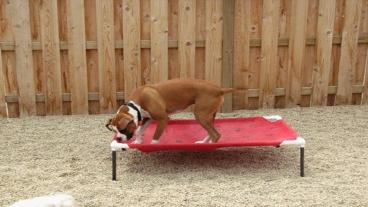Dog training - Dealing with problem puppy behaviors - PowerPoint PPT Presentation
Title:
Dog training - Dealing with problem puppy behaviors
Description:
Dog training - Dealing with problem puppy behaviors – PowerPoint PPT presentation
Number of Views:38
Title: Dog training - Dealing with problem puppy behaviors
1
(No Transcript)
2
Dog training - Dealing with problem puppy
behaviors
3
Everyone who owns a puppy or dog will
eventually have to deal with and correct
less than desirable behaviors on the part
of their companion animal. There are a
number of behaviors that should be nipped
in the bud, including
4
Jumping up on peopleThis is one of those
behaviors that many owners inadvertently
encourage in their animals, since jumping up,
wagging his tail and the like can be adorable
in a young puppy. When that puppy is
older, larger and heavier, however, this
jumping up behavior ceases to be cute and
begins to become annoying and even dangerous.
5
A large, heavy dog jumping up on people can be
dangerous to young children and even to some
adults, since a large, 100 pound plus dog
can easily knock down a child or small adult.
Since you as the owner are responsible for the
behavior of your dog, it is important to nip this
problem behavior in the bud.
6
The best time to do that, of course, is when the
puppy is still small and easy to handle.
When the puppy jumps up on you or someone
else, gently place the puppys feet back on the
floor. When the dog remains standing there, be
sure to praise it extensively.
7
It is also important to give the puppy an
alternative to jumping up. Puppies jump up
on people to express their enthusiasm, so
it is important to redirect this energy in
a more socially acceptable direction. Try
teaching the puppy to present his paw
instead of jumping up.
8
When teaching the puppy to not jump up on people,
it is important to be consistent. Consistency
is important in any training program, and
all members of the family must understand
that the puppy is not permitted to jump on
them.
9
Pulling, charging and tugging on the leadOne
problem you definitely want to nip in the
bud is this one. It is important that
the puppy learn to respect the collar and
leash now, when he is still small and light
enough to handle. Teaching this lesson to a 10
pound puppy will be much easier than
teaching the same lesson to a 150 pound dog.
10
Using a good strong body harness or head
collar can be a big help when training a
puppy not to pull, or to retrain a dog that has
already learned to pull on the leash.
When first fitting a harness, it is
important to allow the puppy to walk around
wearing it, so that he can get used to wearing
it.
11
The first thing your puppy must learn, and the
basis of all subsequent training, is teaching
your dog to heel. Teaching your dog to
walk quietly at your side on a loose lead is the
basis of all dog training, and until your puppy
has mastered this vital skill he will be unable
to move onto more advanced training.
12
When walking with a puppy on a leash, it is
important to always keep slack in the leash.
If the puppy begins to pull on the
leash, the handler should quickly change
directions. The puppy will then find
itself lagging behind instead of forging ahead.
The least will be loose except for the
split second it takes to change directions.
It is important for the handler to use a
quick tug of the leash, followed by an immediate
loosening, when teaching this lesson.
13
When teaching the puppy to walk properly,
it is important to never allow the puppy
to pull you around, or to forge ahead on
the leash. Allowing the puppy to pull you
around will teach him exactly the wrong lesson.
14
To Learn More About Dog Training, go to
http//howtohousetraindog.com/go/dog-traininghtt
p//howtohousetraindog.com/go/theonlinedogtrainer
15
(No Transcript)































